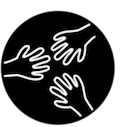Losing weight and shedding unwanted fat is a journey that many of us embark on at some point in our lives. We’ve all heard about those stubborn areas where fat seems to cling on for dear life, making our weight loss efforts feel like an uphill battle. But have you ever wondered, “Where is the hardest place to lose fat?” In this comprehensive article, we’ll delve into the science of fat storage, explore various body types, and understand the challenges of losing fat in different areas. Get ready to gain valuable insights that can help you achieve your fitness goals! This article is provided by healtharticlesmagazine.com
Understanding Fat Storage in the Body
Before we dive into the specifics of fat loss, it’s essential to understand how our bodies store fat. Fat is an essential energy reserve, and our bodies are designed to store it for times of scarcity. When we consume more calories than our bodies burn, the excess energy is stored in fat cells.
Fat distribution varies among individuals due to genetics, hormones, and lifestyle factors. Some people may naturally store more fat in certain areas, while others might distribute it more evenly throughout their bodies. This diversity in fat storage is what makes the process of losing fat challenging for different individuals. Let’s discover how to start losing weight.
The Role of Genetics in Fat Storage
Genetics play a significant role in determining our body’s fat distribution. If your parents or grandparents tended to carry excess weight in specific areas, you might have a higher likelihood of doing the same. However, genetics are not the sole factor in fat distribution, and lifestyle choices can influence the outcome.
The Most Common Trouble Spots
- Belly Fat – The Stubborn Pooch
One of the most common and challenging areas to lose fat is the belly. Belly fat is notorious for being stubborn, especially for those with the “apple” body shape. Excess fat around the midsection is not only aesthetically undesirable but also linked to various health risks, including cardiovascular issues and insulin resistance.
To target belly fat effectively, a combination of cardiovascular exercises, strength training, and a balanced diet is essential. Crunches, planks, and bicycle exercises can help strengthen the core and burn calories.
- Thigh Fat – The Inner Struggle

The thighs are another area where fat tends to accumulate, particularly for those with the “pear” body shape. Women, in particular, may experience this as a result of hormonal fluctuations.
Spot reduction, the idea of targeting fat loss in specific areas, is a myth. Instead, a comprehensive approach to overall fat loss through a combination of cardio, strength training, and a healthy diet is necessary to see results in the thighs.
- Love Handles – Defeating the Flank Foes
Love handles, also known as the flanks, are the deposits of fat that accumulate on the sides of the waistline. These can be particularly frustrating to get rid of since they require a concerted effort to reduce.
Engaging in full-body exercises like burpees, mountain climbers, and Russian twists can help target the love handles along with dietary adjustments that focus on reducing overall body fat.
- Upper Arm Fat – The Bat Wings
For many, the upper arms are a trouble spot, often referred to as “bat wings.” As we age, the skin’s elasticity decreases, making this area prone to sagging.
To combat this, incorporating arm-toning exercises like bicep curls, tricep dips, and push-ups into your fitness routine can help tighten and strengthen the muscles in the upper arms.
Hormones and Fat Storage
Hormones play a vital role in fat storage and distribution, particularly for women. Hormonal changes during menstruation, pregnancy, and menopause can influence how and where fat is stored in the body.
Estrogen, for instance, encourages fat storage around the hips and thighs, while testosterone promotes fat storage around the abdomen. Balancing hormone levels through a healthy lifestyle, regular exercise, and stress management can help regulate fat storage and make the weight loss journey more manageable.
Body Types and Fat Distribution
There are three primary body types, each with unique characteristics and fat distribution patterns:
- Ectomorphs – Ectomorphs are typically lean individuals with fast metabolisms and little body fat. They find it challenging to gain weight but may struggle to build muscle mass.
- Mesomorphs – Mesomorphs have a more muscular build and tend to gain muscle and lose fat relatively easily. They have a more balanced fat distribution.
- Endomorphs – Endomorphs often have a higher body fat percentage and find it easier to gain weight. They may struggle with fat accumulation in certain areas.
Understanding your body type can provide valuable insights into how your body stores and loses fat, allowing you to tailor your fitness and nutrition approach accordingly.
The Myth of Spot Reduction
Many people hope to target specific areas for fat loss, but the concept of spot reduction is a persistent myth in the fitness world. The truth is, our bodies lose fat proportionally across all areas when we engage in regular physical activity and maintain a calorie deficit through a balanced diet.
While targeted exercises can strengthen and tone specific muscles, they do not guarantee localized fat loss. To achieve noticeable fat reduction in specific areas, a comprehensive approach to overall fat loss is necessary.
The Importance of a Balanced Diet
No article on fat loss would be complete without emphasizing the importance of a balanced diet. Nutrition is a critical component of any successful weight loss journey.
Incorporate a variety of nutrient-dense foods into your diet, such as fruits, vegetables, lean proteins, and healthy fats. Avoid excessive consumption of sugary and processed foods, as they contribute to weight gain and hinder fat loss efforts.
The Role of Exercise in Fat Loss
Regular exercise is key to promoting fat loss and improving overall health. A combination of cardiovascular exercises, strength training, and flexibility exercises can help you achieve your fitness goals.
Cardio exercises like running, cycling, and swimming help burn calories and reduce overall body fat. Strength training exercises build lean muscle mass, which, in turn, boosts your metabolism and aids in fat burning. Flexibility exercises like yoga and stretching improve mobility and prevent injuries, allowing you to maintain an active lifestyle.
The Impact of Sleep and Stress
Inadequate sleep and chronic stress can sabotage your weight loss efforts. Lack of sleep disrupts hormonal balance, leading to increased hunger and cravings for unhealthy foods. Chronic stress triggers the release of cortisol, a hormone that encourages fat storage, especially around the abdominal area.
Prioritize getting enough quality sleep each night and practice stress-reduction techniques like meditation, deep breathing, and spending time in nature.
In conclusion, the question “Where is the hardest place to lose fat?” has no one-size-fits-all answer. Fat storage and distribution vary among individuals due to genetics, hormones, and lifestyle factors. While some areas like the belly, thighs, love handles, and upper arms tend to be more challenging for fat loss, a comprehensive approach involving a balanced diet, regular exercise, and lifestyle modifications can lead to successful weight loss.





